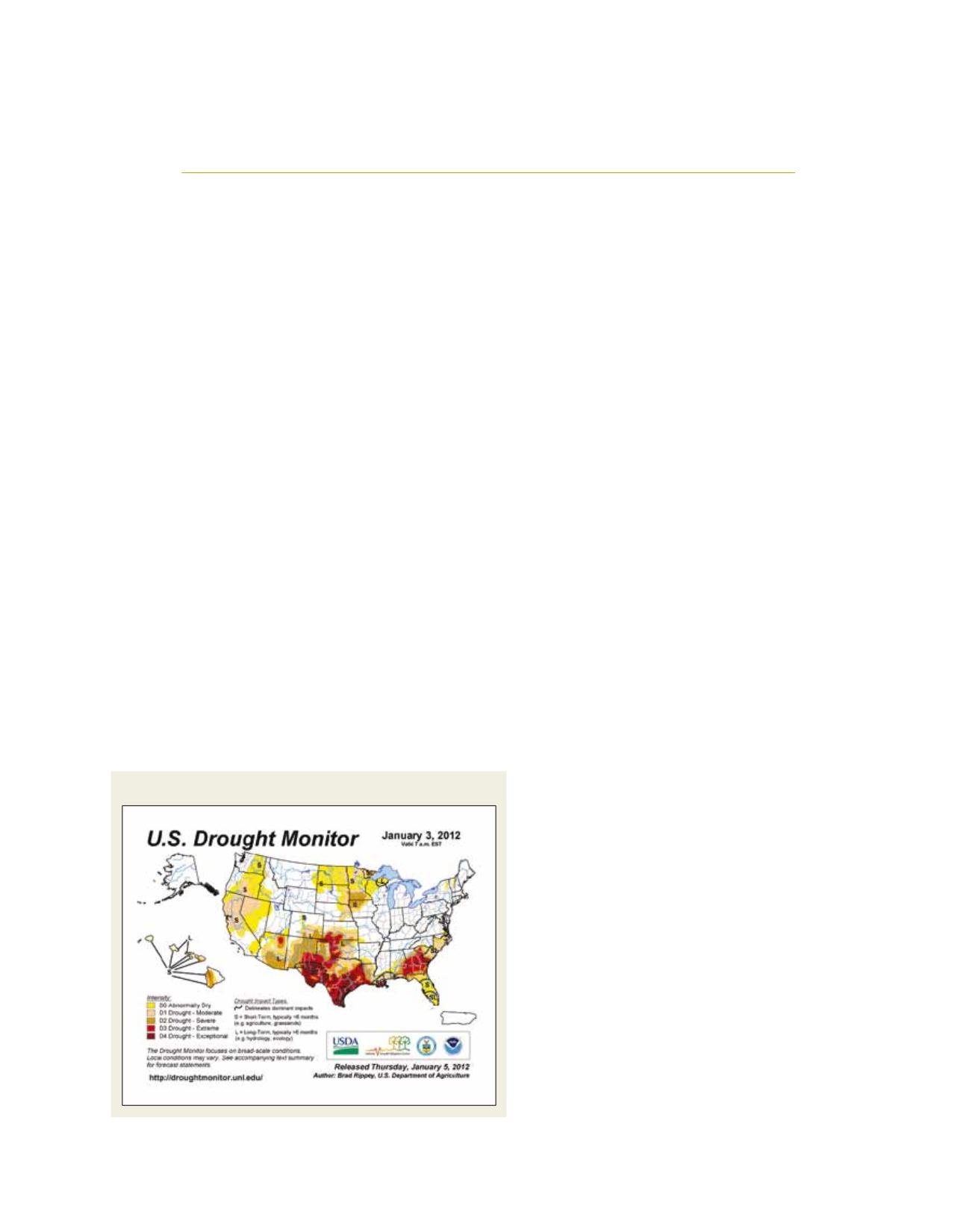

[
] 137
The North American Drought Monitor
Richard R. Heim Jr and Michael J. Brewer,
National Oceanic and Atmospheric Administration
T
he North American Drought Monitor (NADM) is a collabo-
rative continental drought monitoring product prepared
jointly by the United States, Canada and Mexico. It illus-
trates how individual nations can work together to provide
climate services that benefit the participating countries – and
users within those participating countries – individually and
synergistically.
Agriculture has traditionally been the sector most harmed by
drought, but all economic sectors are impacted. Historically, people
have responded to drought in a reactive manner. However, the
development of products and programmes such as the US Drought
Monitor (USDM),
1
NADM, National Integrated Drought Information
System (NIDIS) in the US
2
and drought response plans in many US
states and other nations, has enabled people to begin to anticipate
drought and act in a more proactive and efficient manner.
History and purpose of the NADM
The USDM was inaugurated in 1999 as a monitoring tool depicting
current conditions of drought within the 50 United States and Puerto
Rico.
3
The NADM was initiated at a three-day workshop in late April
2002.
4
Representatives from the US, Canada and Mexico agreed to
collaborate in continental monitoring of drought as the first step in
a larger effort to improve the monitoring (and assessment of long-
term variability and trends) of a wider suite of climate
extremes on the continent, including heat waves, cold
waves, drought, flooding and severe storms. The NADM
maps were experimental from November 2002, becom-
ing operational after April 2005. The drought depiction
in Canada steadily expanded from the Prairies to all the
southern provinces as drought assessment techniques
and databases improved.
The NADM partners include:
• In the US, the National Oceanic and Atmospheric
Administration (NOAA) National Climatic Data
Center (NCDC), Climate Prediction Center (CPC),
the US Department of Agriculture (USDA) and
National Drought Mitigation Center (NDMC)
• In Canada, Agriculture and Agri-Food Canada (AAFC)
and Meteorological Services of Canada (MSC)
• The National Meteorological Service (SMN) in Mexico.
These partners contribute time and personnel to NADM
activity as part of their normal operational duties (and other
duties as assigned), since there is no dedicated budget or
any funds specifically allocated to the NADM activity.
Benefits of the NADM
Coordinated monitoring of drought across North
America benefits Government, agribusiness, water
resources, utilities and similar user groups. These
groups include policymakers and water resource
planners and operators within each country, as well
as corporate players and international government
agencies with agricultural, commodity and water
management interests across North America and, ulti-
mately, the North American public. Private sector users
of the NADM include agricultural, commodity and
water management companies. Several Mexico-specific
user groups were identified at the recent NADM Forum
in Cancun,
5
including the Directorate General for
Economic Research of the Bank of Mexico, the Institute
for Sustainable Development in Mesoamerica, and the
Municipal Planning Institute Comitan Implan. The
benefits of using the NADM are centred on reducing
drought vulnerability and risk, and comprise a variety
of socioeconomic and public security applications (such
as disaster mitigation measures), including reduced
economic loss due to drought and more efficient
management of water resources across international
boundaries. In the early 2000s, drought afflicting the
The US Drought Monitor for 3 January 2012
Source: NOAA
D
isaster
R
isk
R
eduction
















